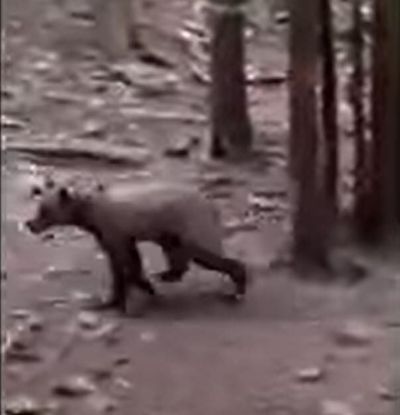Groups threaten lawsuit over black bear baiting in Idaho

A coalition of environmental groups has notified the state of Idaho that they plan to file a lawsuit over the use of bait for hunting black bears in habitat occupied by federally protected grizzly bears.
Western Watersheds Project, WildEarth Guardians, Wilderness Watch and Friends of the Clearwater sent Idaho Gov. Brad Little and other officials a 60-day notice of intent to sue over the practice, which they argue poses a threat to grizzlies and violates the Endangered Species Act.
It comes about a month after a hunter in North Idaho shot a grizzly over a bait site in the mountains along the St. Joe River after officials with the Idaho Department of Fish and Game misidentified it as a black bear.
Dana Johnson, policy director for Wilderness Watch, said in a news release that the June killing of the grizzly was “tragic and completely preventable.”
“We’re submitting this notice of intent to sue to make sure it doesn’t happen again,” Johnson said.
Roger Phillips, a spokesman for the Idaho Department of Fish and Game, declined to comment on the notice.
Grizzly bears in the Lower 48 states have been listed as threatened under the Endangered Species Act since 1975. Biologists estimate there are roughly 2,000 now, with most of them in large populations in and around Glacier and Yellowstone national parks.
Idaho’s grizzlies are mostly found in the eastern part of the state near Yellowstone and in the Selkirk and Cabinet mountain ranges in North Idaho. The bears are known to wander long distances, however, and they’ve been showing up in unexpected places.
The bear that was shot last month near St. Maries was well outside of areas with well-documented resident populations.
Idaho and Wyoming are the only states with known grizzly bear populations that allow black bear hunters to use bait.
The practice is outlawed in some Idaho hunting districts with high numbers of grizzlies. In others that may have grizzlies, the state warns hunters that they could encounter the threatened bears, and officials have worked to educate hunters on the differences between the two species.
But the environmental groups argue that allowing bait at all presents problems for grizzlies beyond mistaken identity kills. Bears that access bait sites can become conditioned to human foods, which can lead to bear-human conflicts that result in a grizzly being killed.
Three of the groups behind this week’s notice unsuccessfully sued to end black bear baiting in 2019. Johnson said in an interview that the previous challenge focused on a section of the Endangered Species Act that deals with consultation requirements between federal agencies.
The new challenge would center on the part of the act that prohibits the “take” of a threatened animal – defined as harassing, harming or killing them.
The notice cites the June shooting of a grizzly as direct evidence that bear baiting has violated that part of the law. It also argues that bait stations risk conditioning grizzlies to look for human foods, which can result in the bears spending more time around people and ultimately becoming problem bears that get killed by wildlife managers.
Johnson said the June incident isn’t isolated, and that there have been other instances of grizzlies being photographed at bait stations in Idaho.
She added that grizzlies are finding their way into areas they were pushed out of decades ago, such as the Bitterroot ecosystem along the Idaho-Montana border.
“If we want bears getting back into areas where they should be, where there’s prime habitat … we have to let them get there, and they have to have protection in getting there,” she said. “This is kind of a no-brainer really to get bait out of their way.”